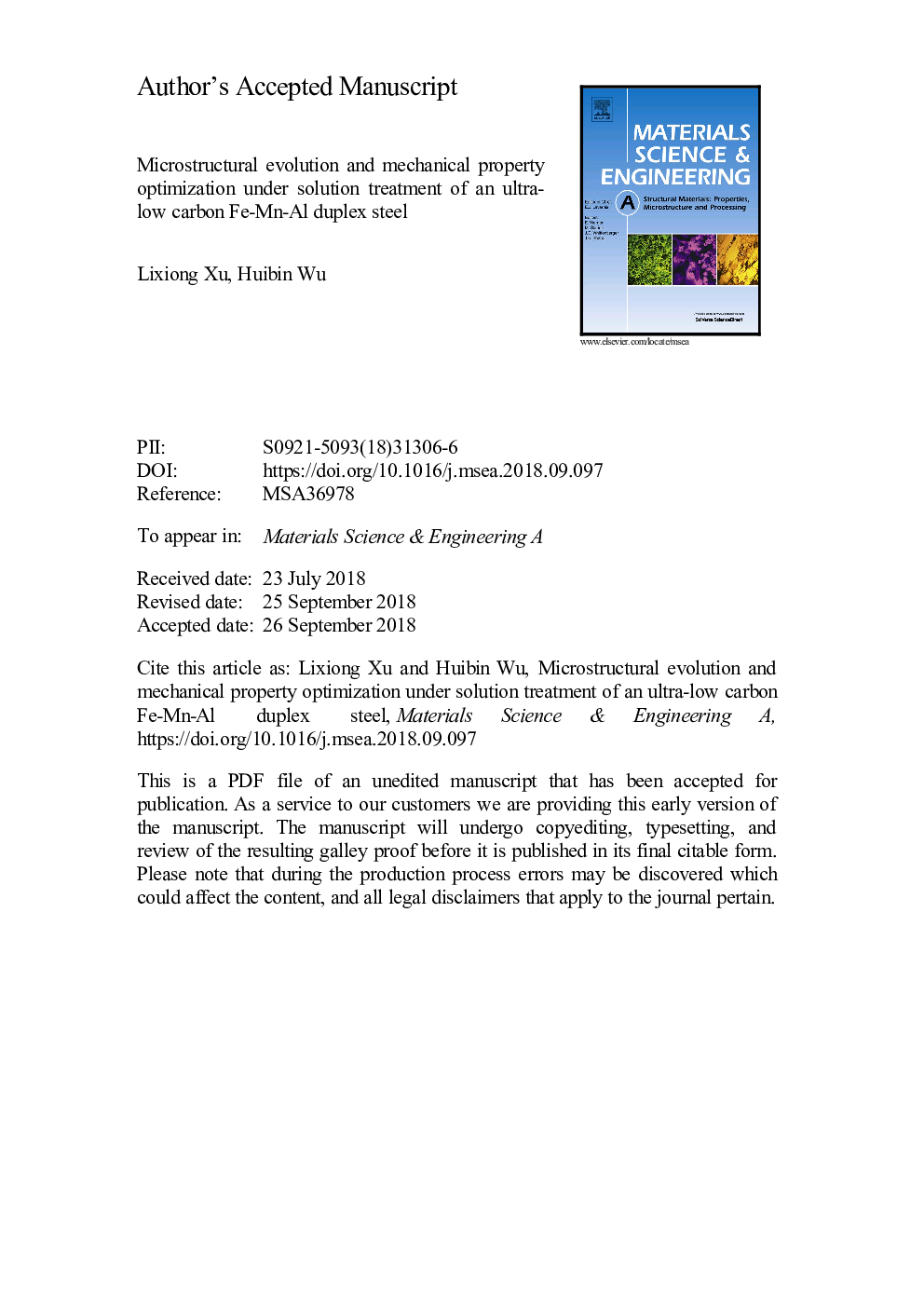| Article ID | Journal | Published Year | Pages | File Type |
|---|---|---|---|---|
| 11001642 | Materials Science and Engineering: A | 2018 | 16 Pages |
Abstract
A hot rolled (austenite + δ-ferrite) duplex steel was solution treated at various temperatures and durations. The comprehensive mechanical properties of the steel were improved and exhibited different evolutions depending on the solution temperature and time. After being solution treated at 1000â¯Â°C for 1â¯h, the steel exhibited an optimal combination of tensile strength and ductility of 33.1â¯GPa%, and impact energy of 129.7â¯Jâ¯cmâ2 (â196â¯Â°C). Phase transformation, elemental partitioning, microstructure uniformity, and deformation mechanism were also investigated to clarify the relationship between microstructural evolution and mechanical property optimization. In-situ observation revealed that recrystallization occurred principally in the distorted austenitic matrix during solution treatment. The faster coarsening of the austenite grains separated the banded δ-ferrite, resulting in a uniform microstructure. Al enrichment in the δ-ferrite decreased the stacking fault energy of austenite to 25-55â¯mJâ¯mâ2, in the range where twinning induced plasticity (TWIP) dominated the plastic deformation. The strength of the as-solutionized steel was associated with phase proportion and the varying microhardness. The excellent ductility and toughness were attributed to microstructure homogenizing and TWIP effect, facilitated by the increased solution temperature and processing time. When the solution temperature was â¥â¯1000â¯Â°C, the hard and brittle δ-ferrite phase enhanced the strength but deteriorated the ductility and toughness of the steel.
Related Topics
Physical Sciences and Engineering
Materials Science
Materials Science (General)
Authors
Lixiong Xu, Huibin Wu,
